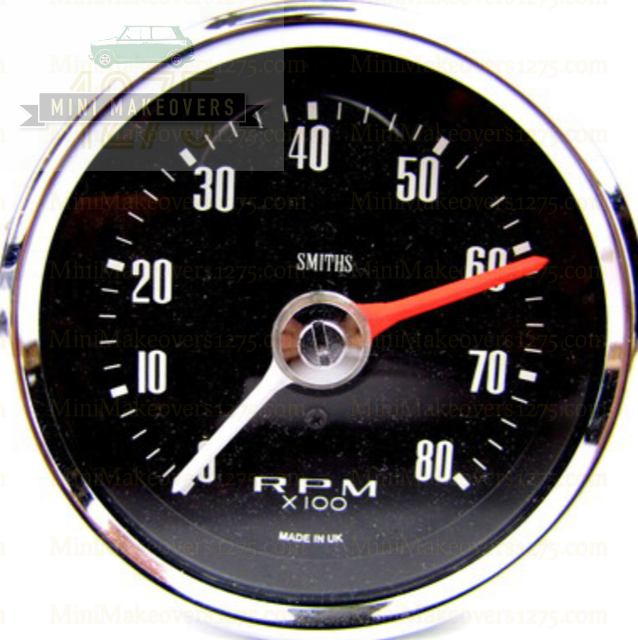Tachometer Fundamentals: Everything You Required to Know for Accurate Readings
Tachometer Fundamentals: Everything You Required to Know for Accurate Readings
Blog Article
The Relevance of a Tachometer in Checking Engine Speed and Performance in Automotive Applications
In the realm of vehicle design, the tachometer stands as a crucial instrument in the driver's toolbox, offering a direct window right into the inner functions of an automobile's engine. Past its feature as a mere gauge of transformations per min (RPM), the tachometer offers as a vital device for fanatics and professionals alike, supplying real-time insights right into engine performance and health and wellness.
Relevance of Checking Engine RPM
Monitoring engine RPM, or transformations per min, is a critical element of auto upkeep and efficiency examination. Engine RPM directly correlates with the rate at which the engine's crankshaft rotates, indicating exactly how quickly the engine is running - tachometer. By keeping an eye on RPM, technicians can examine the health and wellness of the engine, identify potential problems, and fine-tune performance. An unusual RPM reading may indicate troubles such as engine misfires, faulty ignition system, or issues with the gas delivery system. Constantly high RPM analyses might show aggressive driving behaviors or the demand for a greater equipment change to boost gas efficiency.
Furthermore, checking engine RPM is vital for efficiency assessment in auto racing and high-performance cars. Keeping optimal RPM levels is important for accomplishing peak power outcome and acceleration. Racers frequently utilize tachometers to guarantee they are running within the optimal RPM variety for maximum performance. In summary, monitoring engine RPM is not just vital for spotting problems yet additionally for maximizing engine efficiency in numerous auto applications.

Advantages of Real-Time Information
In auto applications, real-time data plays a critical duty in supplying instant understandings into the efficiency and problem of the automobile. By constantly keeping an eye on various specifications such as engine speed, temperature level, gas consumption, and a lot more, real-time data offers many advantages that add to improved performance and safety when driving.
Additionally, real-time data assists in efficiency optimization by providing instant comments on driving routines and engine efficiency. Drivers can adjust their behavior in real-time based on this information to attain much better fuel economic climate and extend the life expectancy of their vehicle.

In addition, real-time information plays an important function in modern-day automobile diagnostics, making it possible for specialists to rapidly identify and deal with malfunctions. This results in minimized downtime, lower maintenance costs, and eventually, enhanced general vehicle reliability and durability (tachometer). By utilizing the power of real-time information, vehicle stakeholders can make enlightened choices that positively affect both the efficiency and long life of the vehicle
Effect On Gear Shifts
Effective gear changes in automobile applications dramatically affect general performance and driving experience. The tachometer plays a critical role in maximizing gear shifts by offering real-time engine rate information to the chauffeur. When approaching the redline on the tachometer, it signals the vehicle driver to upshift to prevent over-revving the engine and triggering prospective damages. On the various other hand, downshifting at the best moment can help maintain the engine in its power band, making sure receptive acceleration when needed.
Furthermore, the tachometer help in accomplishing smoother equipment changes, especially in hand-operated transmissions. By keeping an eye on engine speed, vehicle drivers can implement gear shifts at the optimal RPM array, minimizing snagging activities and minimizing wear on the transmission elements. This accuracy on duty changes not just boosts driving convenience but also adds to sustain effectiveness.
Enhancing Gas Efficiency
Given the important function the tachometer plays in maximizing equipment changes for efficiency and engine wellness, it straight adds to taking full advantage of fuel effectiveness in vehicle applications. By supplying real-time comments on engine rate, the tachometer aids chauffeurs in maintaining one of the most reliable RPM range for fuel economy. When drivers consistently keep an eye on the tachometer and change their driving routines appropriately, they can stay clear of unneeded fuel intake triggered Visit This Link by over-revving or carrying the engine.
In addition, the tachometer aids vehicle drivers recognize the most fuel-efficient gear to be in at any provided moment, protecting against the engine from working harder than required. This is specifically vital throughout acceleration and travelling, where remaining in the right gear can significantly impact fuel performance. Additionally, the tachometer can signal drivers to prospective mechanical concerns that could be adversely impacting gas economic situation, such as a sliding clutch or a stopped up air filter. Finally, the tachometer works as a beneficial device in enhancing gas efficiency by promoting optimal driving practices and recognizing areas for renovation in the vehicle's efficiency.

Optimizing Engine Long Life
The tachometer's role in keeping an eye on Recommended Site engine speed and performance is instrumental in making sure the long life of automobile engines. Monitoring the tachometer allows drivers to remain within the suggested RPM array for their vehicle, avoiding unnecessary strain on the engine and prolonging its life expectancy.

Conclusion
To conclude, the tachometer plays a critical function in keeping an eye on engine speed and performance in automotive applications. By giving real-time information on RPM, it allows for reliable gear changes, improved fuel performance, and taken full advantage of engine long life. This device is vital for preserving ideal engine performance and making certain the total capability of a lorry.
Report this page